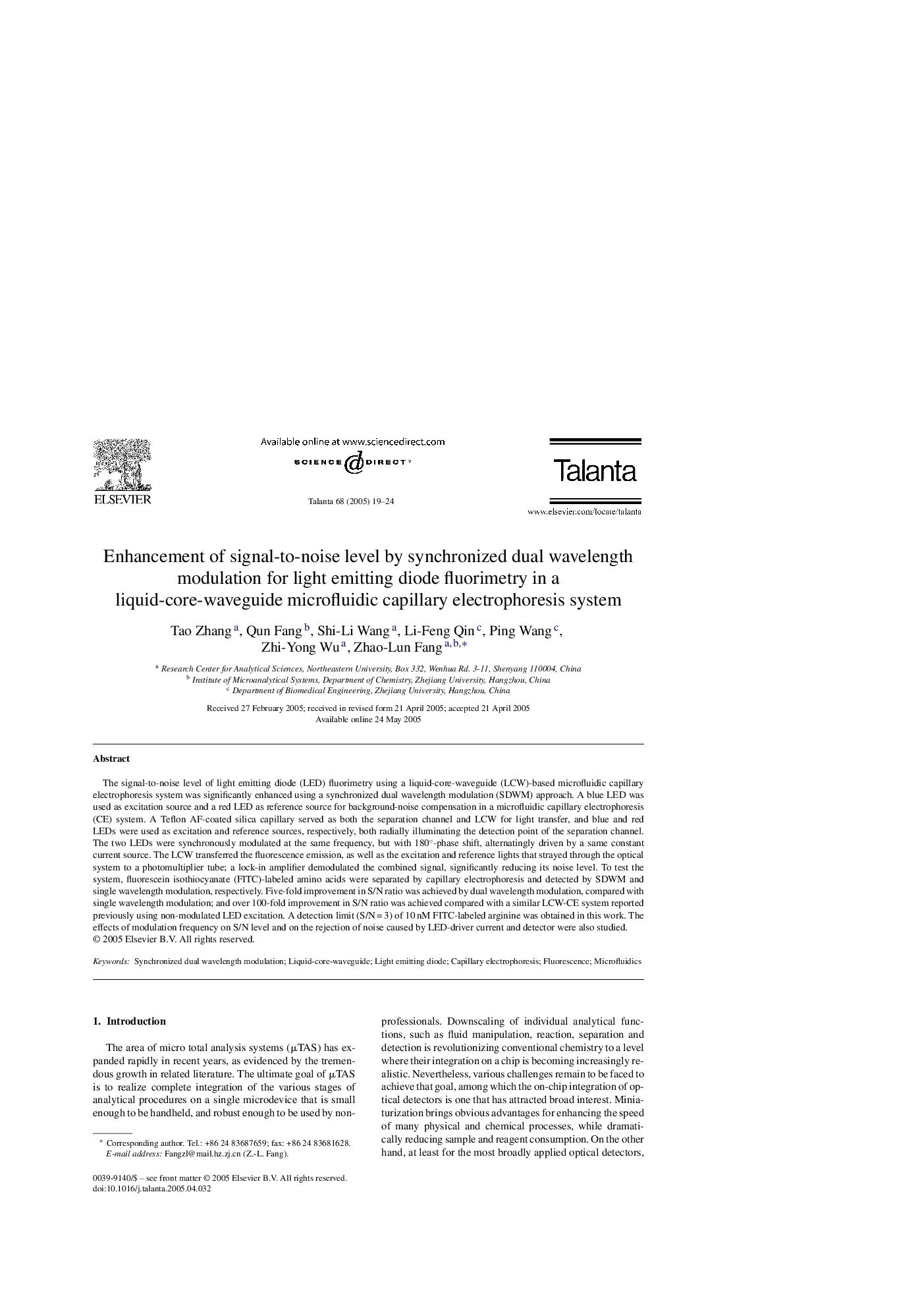| Article ID | Journal | Published Year | Pages | File Type |
|---|---|---|---|---|
| 10559920 | Talanta | 2005 | 6 Pages |
Abstract
The signal-to-noise level of light emitting diode (LED) fluorimetry using a liquid-core-waveguide (LCW)-based microfluidic capillary electrophoresis system was significantly enhanced using a synchronized dual wavelength modulation (SDWM) approach. A blue LED was used as excitation source and a red LED as reference source for background-noise compensation in a microfluidic capillary electrophoresis (CE) system. A Teflon AF-coated silica capillary served as both the separation channel and LCW for light transfer, and blue and red LEDs were used as excitation and reference sources, respectively, both radially illuminating the detection point of the separation channel. The two LEDs were synchronously modulated at the same frequency, but with 180°-phase shift, alternatingly driven by a same constant current source. The LCW transferred the fluorescence emission, as well as the excitation and reference lights that strayed through the optical system to a photomultiplier tube; a lock-in amplifier demodulated the combined signal, significantly reducing its noise level. To test the system, fluorescein isothiocyanate (FITC)-labeled amino acids were separated by capillary electrophoresis and detected by SDWM and single wavelength modulation, respectively. Five-fold improvement in S/N ratio was achieved by dual wavelength modulation, compared with single wavelength modulation; and over 100-fold improvement in S/N ratio was achieved compared with a similar LCW-CE system reported previously using non-modulated LED excitation. A detection limit (S/N = 3) of 10 nM FITC-labeled arginine was obtained in this work. The effects of modulation frequency on S/N level and on the rejection of noise caused by LED-driver current and detector were also studied.
Related Topics
Physical Sciences and Engineering
Chemistry
Analytical Chemistry
Authors
Tao Zhang, Qun Fang, Shi-Li Wang, Li-Feng Qin, Ping Wang, Zhi-Yong Wu, Zhao-Lun Fang,
